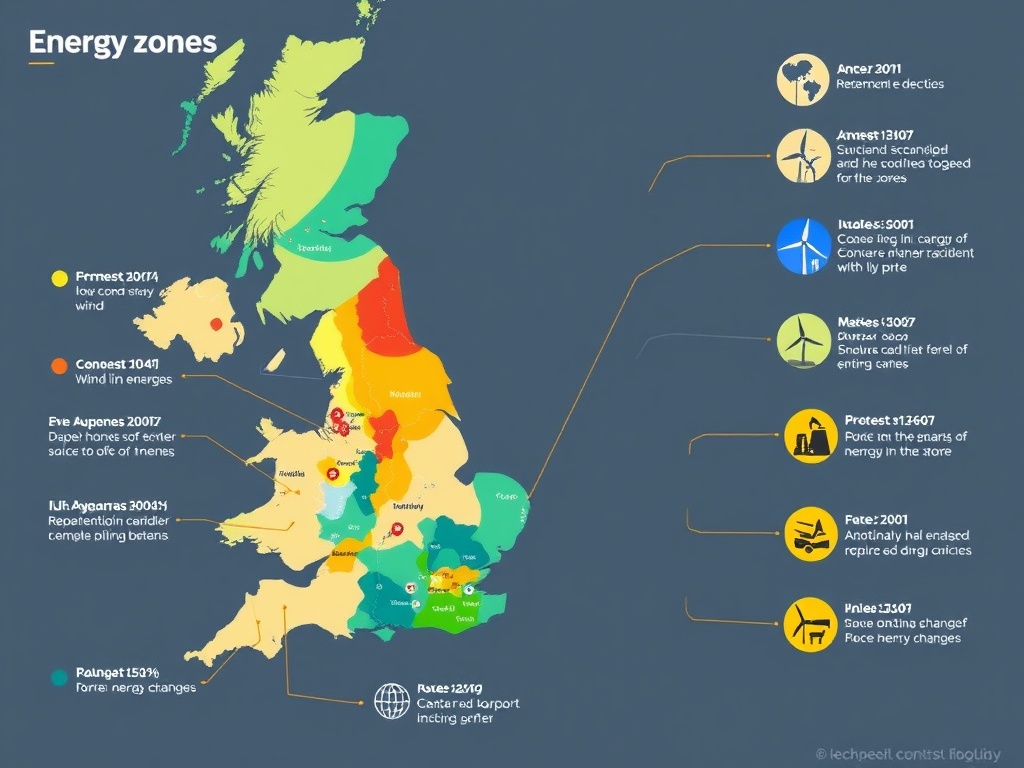Potential Zonal Energy Pricing Changes in Britain

Recent analyses indicate that proposed changes to energy pricing in Britain may result in discrepancies where residents in England could face higher costs compared to their counterparts in Scotland. The Labour Party is reportedly considering a review that could implement a zonal energy pricing model, effectively dividing the UK into regions for energy cost assessments. Preliminary expectations suggest that certain areas in Scotland may benefit from lower energy prices.
Under this zonal pricing framework, both households and businesses would see their energy bills determined by local production and supply costs. Currently, there is some degree of regional variation in energy pricing; for instance, residents in south-west England often pay more than those in the East Midlands. This disparity arises because areas with greater distances between homes necessitate a more expansive energy network, thus increasing delivery costs.
However, the new proposals could allow regions that generate more energy to enjoy reduced prices. A recent model developed by the consultancy firm LCP suggests that over the next decade, certain parts of Scotland could experience lower wholesale prices due to lower demand and a more robust infrastructure. Conversely, much of the remainder of Britain may see their wholesale prices exceed the national average, potentially leading to increased energy bills for consumers across the country.
According to the findings, regions identified as likely to incur higher prices include:
- Central Scotland: Prices here could be, on average, £3 per megawatt hour (MWh) higher.
- England and Wales: Expected to see prices approximately £6 per MWh higher.
- South Coast: Anticipated prices could be around £10 per MWh higher compared to national pricing.
Reasons Behind the Proposed Changes
Tony Jordan, an expert from the energy consultancy Auxilione, explained that the primary motivation for these plans is to encourage energy generation across diverse regions. He stated, “The concept of creating ‘zones’ aims to allow those with power generation facilities nearby to benefit from lower prices, thereby promoting regional supply and demand dynamics throughout the nation.”
Jordan further elaborated, “Currently, energy generation is concentrated in strategic locations while consumption is dispersed, placing significant strain on the existing network.” He noted that various strategies are under consideration, each of which would involve associated costs. “We face a choice: either enhance capacity to efficiently distribute power across the network or shift generation to areas that currently do not meet demand effectively,” he added.
Scott Byram of The Energy Shop raised pertinent questions regarding the practical implementation of these plans. He expressed concerns, stating, “Renewable energy sources can be inconsistent, and when generation declines—such as during periods of low wind or sunlight—regions may need to rely on imports from the broader grid. If that occurs, will they incur higher charges?” He questioned how these dynamics could ultimately influence consumer bills, suggesting that unpredictability in renewable generation could lead to some regions experiencing significantly higher costs than they do currently.
Conversely, support for the proposed changes is emerging from various sectors. Octopus Energy, in a policy paper, argued that zonal pricing is essential for establishing “an efficient and reliable net zero power system.” They emphasized that zonal pricing would accurately reflect losses and network congestion in wholesale prices, thereby providing a cost that better represents the localized expense of electricity usage.
A report from FTI Consulting, commissioned by Octopus Energy, estimated that the implementation of zonal pricing could deliver substantial consumer benefits, amounting to approximately £54.9 billion.
Ofgem, the energy regulator, has also voiced its support for these modifications. Jonathan Brearley, the chief executive, mentioned during an appearance on the Martin Lewis Money Show last month, “The Government is exploring changes to the market structure that would allow consumers in Scotland to enjoy lower bills when renewable energy is generated locally.” He confirmed that Ofgem backs this initiative, expressing a desire to eliminate the practice of paying wind farms to shut down in high-demand areas.
This discussion comes at a time when millions of households in Britain are bracing for increased energy costs. Starting in April, energy bills are set to rise by an average of £111 per household annually, following a 6.4 percent increase in the quarterly price cap announced by the regulator. As a result, the typical energy bill for dual fuel households is expected to climb from £1,738 to £1,849 from April 1st.
A government representative stated, “In this unpredictable global landscape, the only way to ensure our energy security and protect consumers from potential price shocks is to transition towards domestically-sourced power. We are actively considering reforms to the electricity market in Britain, focusing on safeguarding consumers while also encouraging investment. Further updates will be provided in due course.”




